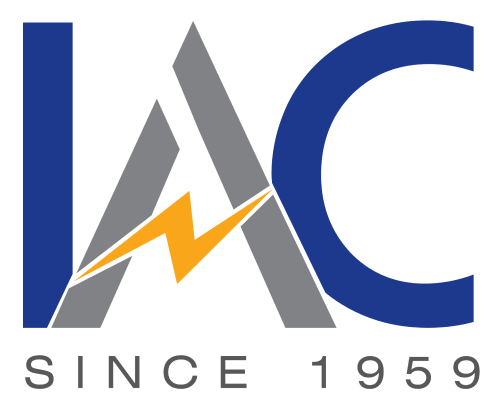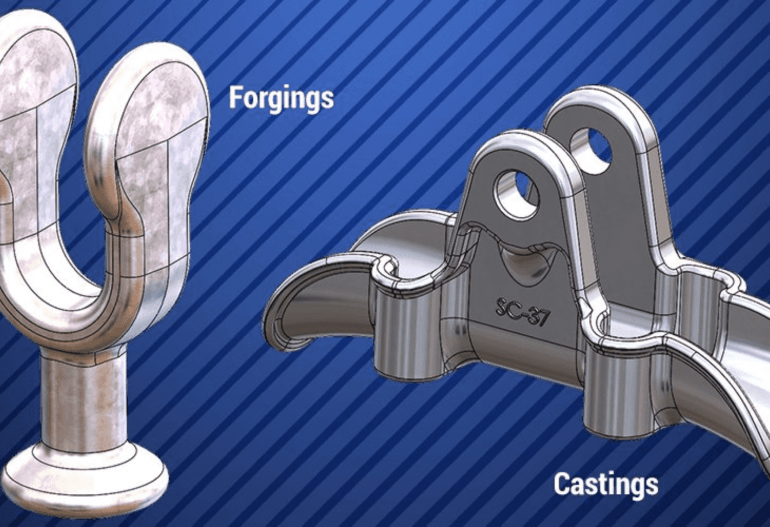Casting & Forging are different processes used for forming metal. While casting and forging are both reliable ways to create metal, the result is different with their own share of advantages and disadvantages.
Casting is the process where the metal is heated until molten. However, in forging the metal is never heated to the point that the metal can melt, but just hot enough to hammer and manipulate.
What is Casting?
Casting is the process where metal is heated until molten. Then pouring or injecting molten metal into a mold vessel to create the desired shape. Though the mould is most often a die, sand and investment casting are often used for specific alloys or for parts with unusual dimensions due to very large size and design. Once the metal cools into the basic desired shape then finishing work, as per requirement, is done by hand or through further machining. Metal casting processes can be classified either by the type of mould or by the pressure used to fill the mould with liquid metal.
Advantages of Casting
● Melting of metal allows it to be formed into a greater variety of shapes which allows for greater flexibility in part design
● Cast parts are nearly always lighter than their forging counterparts
● Initial results are often closer to design specifications. Lessening time spent on secondary machining and processing
● Modifications of part designs and associated moulds are comparatively easy and quick to execute
Disadvantages of Casting
● Cast parts are typically more porous than forged and can contain inadvertent voids
● Cast parts do not possess as much tensile or fatigue strength as forged
● Casting requires closer observation on the part of the metalworker to ensure overall quality and prevent the formation of defects
What is Forging?
Forging is a metal forming process. Though the heating of the component metal is also essential to forging, heating for this method never gets so intense as to make said metal melt. It is merely made hot enough to make it possible to do hammer forging or otherwise manipulate it into a prepared die. Forgings are generally stronger than castings.
Forging may be of two types i.e., Open Die Forging and Closed Die Forging :
● Open Die Forging: One of the oldest forms of manufacturing, the billet is heated above the recrystallization temperature, ranging from 1000-1300°C for steel and gradually shaped by skilful hammering or pressing of the workpiece to create the desired shape.
● Closed Die Forging: It is a process where a pressing of forging stock is accurately and uniformly shaped into a die, or set of top of bottom dies, depending on the design requirements. The alloy deformation is confined within the shaped cavity of the dies to achieve the desired engineering configuration.
Advantages of Forging
● The method of altering the metal’s grain structure typically leads to superior structural integrity and mechanical strength.
● The process of forging is typically less expensive than casting thanks to less labour intensive and less involvement of materials scrap.
● Forging, by and large, eliminates surface porosity along with voids and other defects.
● Forging is more consistent in the yield of produced parts and in producing parts that are incredibly strong and ductile.
Disadvantages of Forging
● Extensive post-forging machining or processing may be necessary for meeting exact design specifications.
● The nature of the forging process limits the complexity of parts that can be created through forging.
● Forging with custom alloys is extremely difficult due to the fact that the metal remains solid throughout the process.
Different manufacturing processes lead to metals that help create different products that help sustain the modern lifestyle. Casting & Forging leads to different electrical accessories, fittings and hardware that lead to secure and safe electricity in our country and abroad. IAC Electricals is one of the leading manufacturers of India of such accessories. Headquartered in Eastern India, their products confirm to various standards and have been tested in international laboratories as well. To know more about us, visit https://iacelectricals.com.






